Professional wedding photographer Ed Godden tests the Nikon D5 to find out if it’s a worthy replacement for his pair of Nikon D750 bodies
Nikon D5 Review
Nikon D5 – At a glance
- 20.8-million-pixel FX-format CMOS sensor
- ISO 100-102,400 (expandable to ISO 50-3,280,000)
- 12fps burst (up to 14fps with mirror up)
- 153-point autofocus system with 3D-tracking
- Dual XQD or Compact Flash (CF) slots
- Price: £5199 (body only)
I’ve been a photographer for 20 years, 19 of them spent using Nikon equipment. A brief fling with Canon at the start of my career was quickly brought to an end when someone introduced me to a Nikon F90 film camera. A few, heavier film cameras later and the digital world came calling. First off, the Nikon D1, then the D100, D2, D200, D2HS – and then I hit a wall. As a press and sports photographer I was finding that using a bulky camera with a 300mm lens on a daily basis was killing my back.
Today, I shoot weddings. These can take up to 14 hours. I’m constantly on my feet, forever lugging my kit around. It’s why, a few years ago, I started using the Nikon D600. Size and weight-wise, with a full-frame sensor and great image quality, this camera was perfect for me. Upgrades to the D610 and D750 soon followed. I’m currently shooting all my weddings with two D750 bodies and a D610 body as a spare/back up that always stays in the car on wedding days.
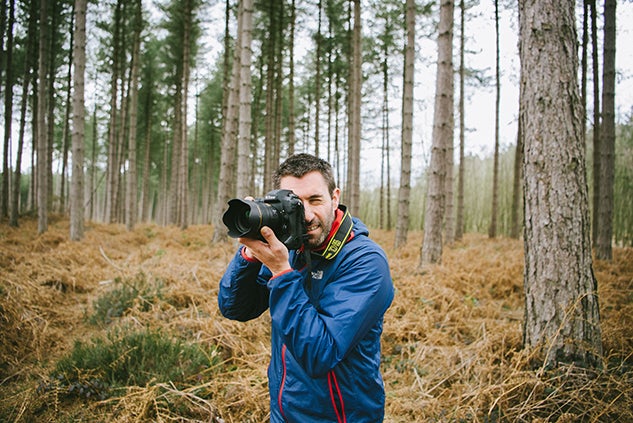
I love my Nikon D750 cameras but recently the two bodies were subject to the dreaded Nikon recall. Both required new shutter units. This was annoying since I had been through this before when my D600 bodies were recalled for dust and oil spot issues on their sensors. It made me wonder whether I shouldn’t splash out on a D3 or D4 – then I heard that the Nikon D5 was due to be launched soon. I decided to look into this beast of a camera.
Initial impressions
I was pretty shocked at the weight and size of the D5 when I lifted it out of the box. Even without a lens, it felt heavier than my two D750 bodies combined. With the 24-70mm f/2.8 lens attached, I slung the camera around my neck and, in an instant, thought there was no way I could shoot a 10-hour wedding with it. You know that if you drop a D750 on your foot it may hurt a bit. If you drop a D5 on your foot, chances are you’ll be off to hospital.
I’d clearly been spoiled by the light and compact D750 and previous DSLRs I’d owned, but not being the type to rely on first impressions, I decided to explore it further by taking a few test photos of my brother’s dog. Setting up the camera was very easy and a similar experience to my D750. I loved the new touchscreen feature, which I found surprisingly responsive. In fact, I used it quite a bit throughout my few weeks with the camera. From sliding my finger across to review images, to pinching the screen to zoom into an image, I love this feature.
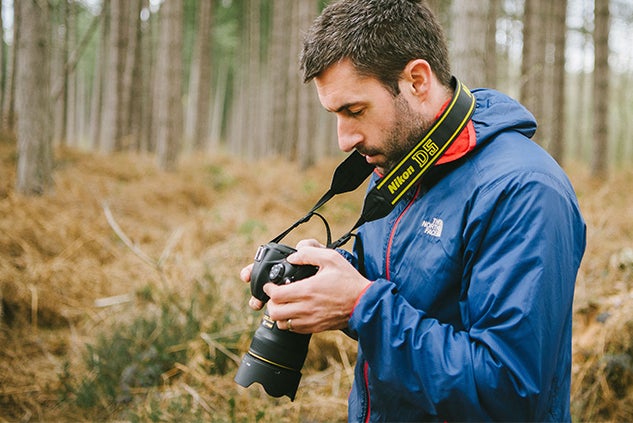
I knew the D5 wouldn’t have the flip-out screen that the D750 has. After all, having paid £5,000 for a camera, you’re going to require it to be as robust as possible and something that extends and flips out won’t please everyone. However, I can’t think of a wedding that I’ve shot with my D750 where I’ve not used the flip-out screen. For low-down portrait shots, so I don’t have to get down on my hands and knees, and high shots looking down on revellers at a party, it really does have its uses. The D750’s clear live view and low-light focusing capabilities combine to make this a great little addition.
First workout
My first proper shoot with the D5 was a wet and windy wedding in Berkshire. It was a good weather test for the camera. Changing lenses and trying to keep the front of the lens bone dry, all while looking smart and respectable – it all needs to be taken into account. From the car to the venue reception was a couple of minutes with the camera slung over my shoulder. Yes it got wet but at no point did I think it would cause a problem. That’s just how well constructed top-of-the-range cameras are these days. From bridal prep, to the ceremony and to portraits outside in the terrible weather, the D5 performed fantastically and didn’t slip focus once.
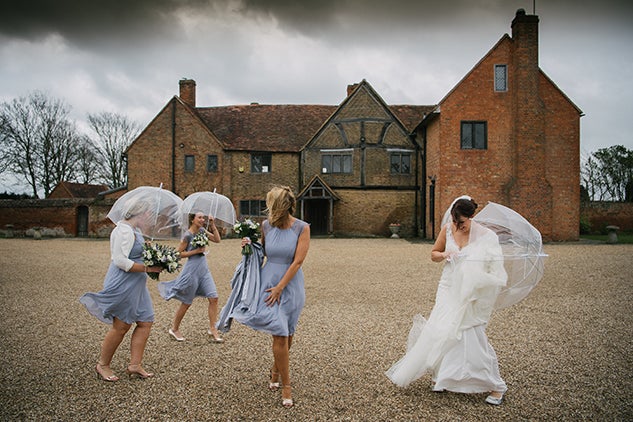
Nikon D5 & Nikon 24-70mm f2.8 G AF-S ED Lens, 1/320sec, f/2.8, ISO 100, Copyright Ed Godden
The past couple of years I’ve been experimenting with shooting on auto ISO. I love the freedom it gives me to concentrate on keeping an eye out for things going on around me, rather than faffing around with dials and buttons at important moments. The D5 dealt with the light, the dark, the artificial lighting and the natural light all the same, and with total ease. If I could sum up my first day using this camera it would be ‘consistent’. At no point during the day did I feel I was using a brand-new camera. This is a great feeling to have. I’m a firm believer that being a confident photographer makes you a better photographer. Not just having confidence in your own creative capabilities, but having bags of confidence in the equipment you’re using.
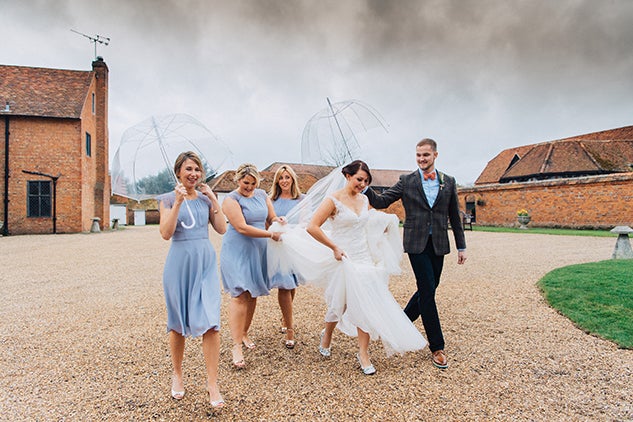
Nikon D5 & Nikon 24-70mm f2.8 G AF-S ED Lens, 1/1600sec, f/2.8, ISO 100, Copyright Ed Godden
As well as being super-impressed with the 24-70mm VR lens that came with the D5, I also tried out a few shots on my latest Nikon purchases, the Nikon 35mm f/1.4 lens and the Nikon 58mm f/1.4 lens. Talk about sharp. These lenses, combined with this camera, are a match made in heaven. There’s a bit of fall-off on the edges when shooting wide open, but that’s to be expected. In my opinion, it’s that effect that gives these prime lenses their unique character.

Nikon D5 & Nikon 24-70mm f2.8 G AF-S ED Lens, 1/320sec, f/2.8, ISO 100, Copyright Ed Godden
For the speeches I boosted up to 10,000 ISO and beyond, without worrying my files were going to be too noisy. This is a camera that allows you to push raw files to the extreme. I also found the dynamic range to be as good as the D750. My 70-200mm lens, that I sometimes use for speeches, is only an f/4, so shooting in dark venues, like the barn I was in, means it is essential to have a camera that is capable of shooting in low light conditions with high ISO settings, unless you want to use flash, of course.
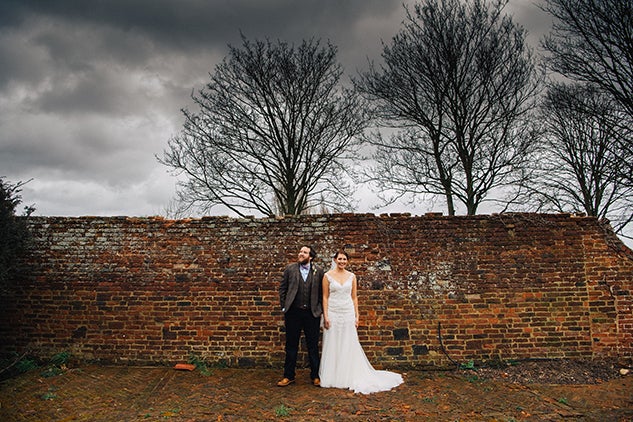
Nikon D5 & Nikon 24-70mm f2.8 G AF-S ED Lens, 1/320sec, f/6.3, ISO 640, Copyright Ed Godden
In the evening I nearly always pop my SB-900 flashgun on, and shoot some fun shutter-drag images on the dance floor. This wedding was no different, and I was very happy with the shots I got as the band started their evening set. At times it was almost pitch black on the dance floor, yet the D5 managed to easily lock onto people’s faces with very little light on them. By bursting a tiny bit of flash, setting a slow shutter speed, and giving the camera a sideways swipe, I got lots of shutter-drag photos of people having fun.

Nikon D5 & Nikon 24-70mm f2.8 G AF-S ED Lens, 1/13sec, f/3.5, ISO 400, Copyright Ed Godden
I know that like many other DSLRs, the D5 has lots of different focusing capabilities and settings, but I’m old-school and still like to select my focus point for every shot. I can’t really explain why I still shoot like this, rather than trying out 3D focusing, for example, but I think I’ve just used this technique for so long now that I simply don’t want to change.
I got back home from the wedding just after midnight and downloaded all the files onto a hard drive, then onto a backup hard drive, before heading to bed. Having never seen an XQD card before, let alone used one, I was impressed at how quick 32GB of files were transferred onto my MacBook. By the way, I had already filled the 32GB card up twice, and downloaded during the day.

Nikon D5 & Nikon 24-70mm f2.8 G AF-S ED Lens, 1/200sec, f/2.8, ISO 7200, Copyright Ed Godden
The following morning I woke up and felt a click in my shoulder, a pain across my back, and soreness at the bottom of my back. It was the same pain I used to get as a sports photographer, and I’d not felt it for a long time. Later that day I went for a six-mile run and I’ve never heard my shoulder click so much.
Pre-wedding shoot
A few days later, and I was back on the road again. First stop, a pre-wedding shoot in Norfolk. I normally travel pretty light when I shoot a pre-wedding session, mainly because they can sometimes involve a lot of walking. Unlike a wedding, I actually have a lot of time to work with the couple on these shoots, and can therefore experiment a lot more. I always take two cameras: my 35mm, 58mm, and a tilt-shift lens for arty shots.

Nikon D5 & Nikon 24-70mm f2.8 G AF-S ED Lens, 1/320sec, f/8, ISO 140, Copyright Ed Godden
It was a gloriously sunny day and the D5 performed really well in the harsh light. Shooting with the manual focus tilt-shift lens is always hit and miss, so I tend to fire off a burst of frames, safe in the knowledge that at least one of them will be pin sharp. With the extra fps the D5 gave me over the D750 I definitely noticed a few more pin-sharp images than normal.
Sunrise shoot
A couple of days later I did another pre-wedding shoot at sunrise, at Durdle Door in Dorset. I left Nottingham at 11pm, drove down through the night, got to Dorset at 4am, and had a 90-minute snooze in the car. I met up with the couple, and we headed over the cliffs from Lulworth Cove to Durdle Door. It turned out to be one of my best pre-wedding shoots for years. There was the lovely couple and a beautiful sunrise, of course, but even using the D5 seemed to make the shoot more interesting.
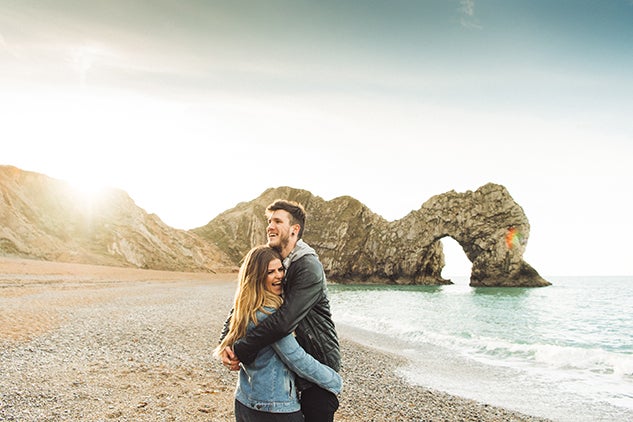
Nikon D5 & Nikon 24-70mm f2.8 G AF-S ED Lens, 1/320sec, f/4.5, ISO 100, Copyright Ed Godden
With the quicker focusing in the low light, together with the rapid frame bursts, I felt I was shooting a lot faster and moving on to different poses and ideas more quickly. When I reviewed the images later that day I struggled to find a single out-of-focus image. Even portraits I’d shot at f/1.4 had nailed it every time – and I’m talking about shots where I was shooting directly into the sun as it crept over the cliffs in the distance. The D5 was so responsive and so consistent.

Nikon D5 & Nikon 24-70mm f2.8 G AF-S ED Lens, 1/100sec, f/2.8, ISO 720, Copyright Ed Godden
Meanwhile, we must have walked about three miles in total during the coastal pre-wedding shoot, and not once did the weight of the camera bother me. Maybe I was adjusting to the size of the D5.
I only started using the Fn button on my Nikon cameras a couple of years ago, and I always set it (the one near the lens) to activate spot metering. With the extra ones on the D5 I think I would programme them to activate something useful and helpful on a wedding day, or engagement shoot. I’m not sure what but I bet if I’d had more time with the D5, I would have found more than just a few functions that I like to quickly access.

Nikon D5 & Nikon 24-70mm f2.8 G AF-S ED Lens, 1/400sec, f/3.5, ISO 100, Copyright Ed Godden
Nikon D5 Review – Final thoughts
After spending a few weeks with the D5, I believe it fully justifies its £5,200 retail price. I shoot between 30 and 40 weddings each year, not to mention a lot of pre-wedding and engagement shoots. I’m a stickler for good equipment that not only gives me confidence in my abilities but also helps me avoid missing photos on a couple’s big day.
The D5’s frame burst did seem unnecessary at first but after shooting just one wedding I realised I need this quantity of images for the way I shoot. As an ex-press photographer I am guilty of firing off a lot of frames in one day. I’m not saying that my D750 isn’t capable of capturing ‘the moment’ by having a lesser fps capability, but I do know that picture sharpness in burst shots does suffer from time to time. Now this could be a lens issue, a light issue, or even a ‘driver’ error issue (me) but after using the D5 and shooting with it in a number of different situations, I have found it to be much more consistent in capturing sharp images [ital]almost[ital] all of the time. As a professional photographer, you can’t put a price on that.
I also think that because of its build quality, a D5 would probably last longer than my D750s. Therefore, spending the extra money on one might actually pay off in the long run, and I’d be more likely to get a better price for it were I to upgrade it in time.
I had vertical grips attached to my old D610 bodies, mainly because I like having the extra button to press for more comfortable shooting. However, you only have to look at my website to see how 99% of my images are horizontal. I only shoot vertical when I need to do a full-length shot of a bride in her dress, or if a portrait of the couple would benefit from an upright crop. As a result, when I got the much lighter D750 bodies, I decided against buying grips for them. For this reason, I think the D5 is too chunky and heavy for me to hold for a straight 12-hour shift. A two-hour, pre-wedding shoot on the Dorset coast, and it’s the perfect camera but a full-on day of wedding fun, I think my back would be killing me every Sunday morning.

Who do I think the D5 would be perfect for? If you’re a press or sports photographer, you’re going to love this camera. If you’re a wedding photographer with bigger biceps than me, it could be the upgrade you’ve been waiting for. It certainly has more than enough megapixel punch for a wedding photographer. Just don’t expect to be shooting with two of them hanging from you all day. Trust me: one will be enough.
A few of my photographer friends have asked me how I’m getting on with the loud shutter on the D5. To be honest, it doesn’t bother me at all. I don’t find it that different from the D750. Last year, to try to avoid ruining the atmosphere at wedding ceremonies, I went through a phase of using the quiet setting on my D750. After a few weeks, though, I came to the conclusion that the quiet setting was actually a more annoying sound that the normal shutter.
Will I be getting a D5 anytime soon? Well, considering both of my D750s are, as I write, returning from Nikon complete with brand-new shutters, probably not. However, I will be keeping an eye on how I get on with the D750s again. I’m pretty sure it won’t be long before I miss some of the D5’s features; for example, the constantly excellent focus tracking and, most impressively, the frames per second. When it comes to equipment, I’ve always been a firm believer in trying before you buy. The fact that I’ve tried this camera, fallen in love with its features, image quality and consistently sharp images, means it’s going to be hard for me to dismiss it from my wish list during the next 12 months.




